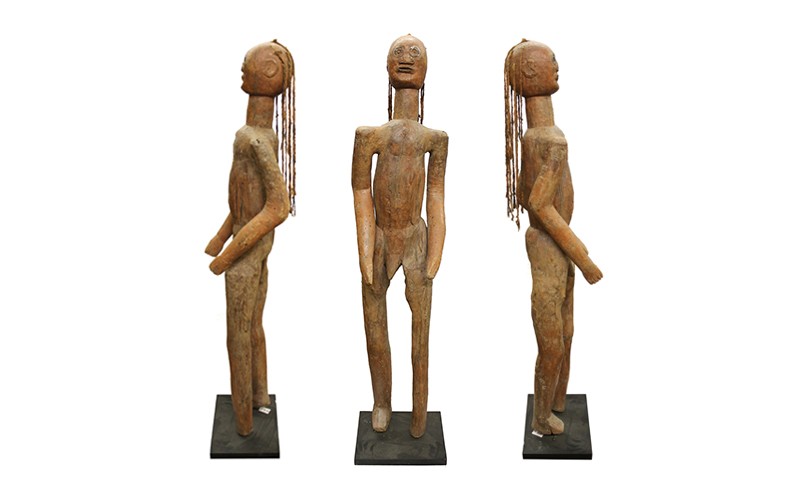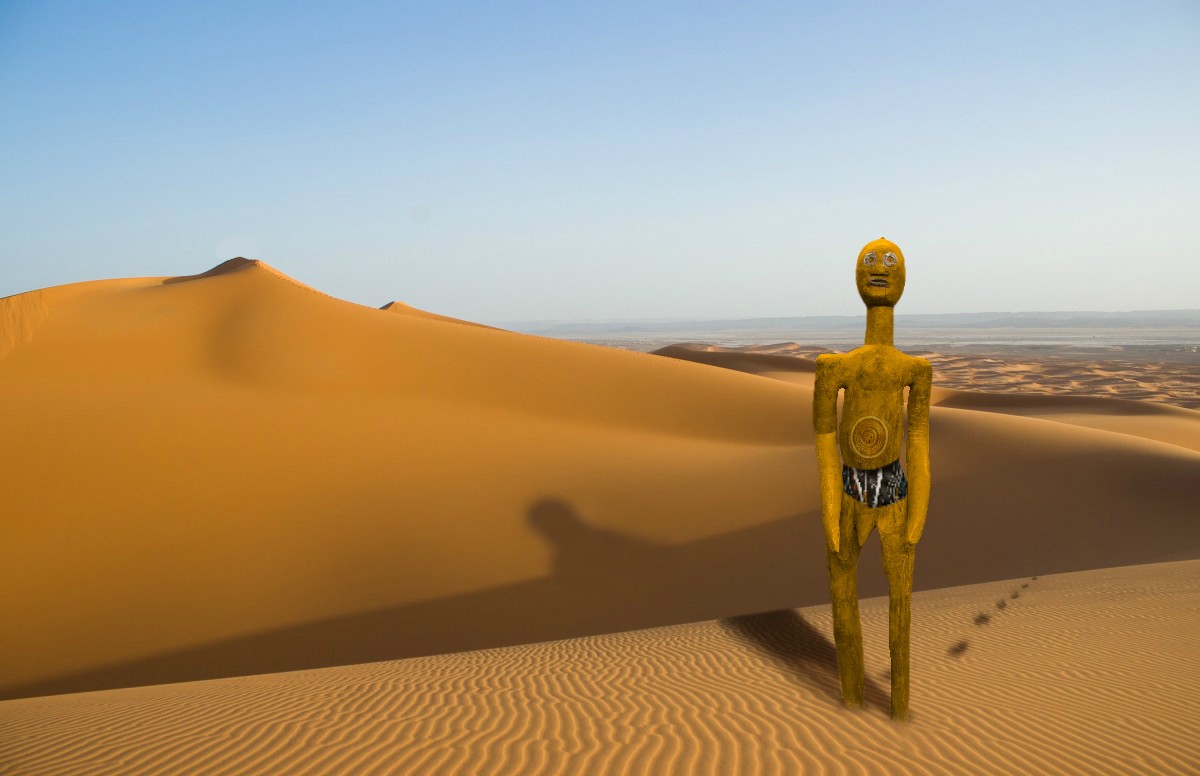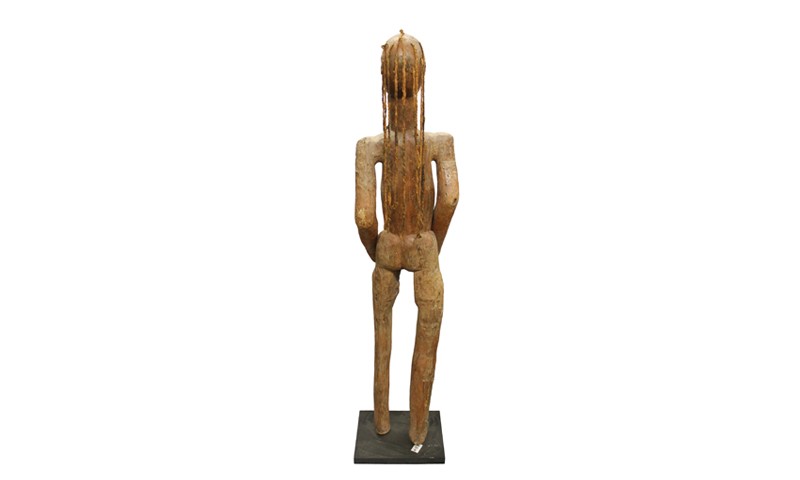 |
Ancestor Figure, 20th Century
Sukuma culture; Tanzania
Wood, metal and hair; 63 in.
2002.58.1
Gift of Heather Sacre |
May the Fourth…
In an annual celebration of culture, science fiction, and a beloved galaxy not too near to here, the Bowers Blog once again uses May the Fourth to take the hyperspace plunge. Last year we featured a miniature made from a hollowed walnut shell which bore a slight resemblance to a beloved Kashyyykian. Fortunately, the Bowers Museum’s collections are rife with doppelgangers, presenting a golden opportunity to bring a wooden likeness of a prim and proper droid to the (star) fore. The figure drawn upon for this comparison originally hails from the Sukuma culture of Northern Tanzania where it would likely have been crafted as an ancestor figure. In this post we look at the role of such figures within Sukuma culture.
…Be with Usukuma
The Sukuma are a loosely affiliated Tanzanian cultural group who live in the vast region surrounding the southern shore of Lake Victoria. The self-named language of the Sukuma is complicated enough that it would practically require a droid fluent in over six million languages to speak it. Due to the difficulty of translating Monotheistic doctrine into Sukuma, only a small percentage of the group has converted to Christianity or Islam. This is not to say though that the Sukuma have not suffered their share of outside influence. The Empire—the German Empire that is—did occupy Sukumaland in the years prior to the first World War. In the face of this, the Sukuma have managed to maintain a strong cultural identity and to this day individual clans still participate in socio-religious practices which were deemed “immoral” by catholic missionaries. These forums constitute the primary cause for figurative carving within Sukuma society. The secondary one is the strong connection to ancestors which has led to the creation of ancestor figures. For no one is the bond to one’s forefathers stronger than the sorcerer chiefs who draw upon their power to help their clans. Rather than using their magic for incredible feats such as floating a chair above a crowd of spear-bearing teddy bear types, these magic-wielding rulers mostly used their powers seasonally for the benefit of cattle and subsistence agriculture.
 |
| Artist's rendition of what 2002.58.1 might look like with yellow pigmentaion, slight alterations, and navigating a desert. |
More than a Hunk of Junk
Compared to Western and Central Africa, both of which are known to have rich sculptural backgrounds, Eastern Africa is often condemned for having relatively little sculptural art. When it comes to wood carving though, the Sukuma are that 3720-to-1 exception to the rule. Sukuma carving is mostly created by amateur carvers for large dance competitions in which two groups battle for the attention of an eager crowd. Here smaller figures are the preference as they can be held high in the air to draw distant onlookers. These tend to have fully articulated limbs and often aggrandized, articulated genitalia, the very likes of which would cause prudish droids embarrassed by a few missing metal plates to short circuit.
Thank the Maker!
The tradition of ancestor figures is significantly less understood due to the relatively few examples which have not simply been misidentified dance figures. These ancestor carvings are defined like all Sukuma sculpture by elongated features and heavy weathering—not in this case the result of being trapped on an alien desert-planet. They instead set themselves apart by tending to lack articulation; being significantly taller; and more often than not bearing fetish material such as metal and real hair. It is not even evident whether the figures were meant to depict specific individuals or whether they instead served as an ambiguation of one’s ancestral lineage. Furthermore, there is no indication that these figures would have been used in Sukuma ancestral shrines as they would have been with the neighboring Nyamwezi people.
 |
| Reverse of 2002.58.1. |
See, 3P-O
Very little thematically connects this Sukuma ancestral figure to the nagging comedic relief of the original Star Wars. The creator, George Lucas, drew inspiration for the character from the 1927 film Metropolis and not from the sculptural work of any Sub-Saharan culture. Still, there seems to be more than a gangly appearance and similar look behind the eye which connects these two. If I’m wrong don’t blame me, I’m an interpreter. May the Fourth be with you!
Text and images may be under copyright. Please contact Collection Department for permission to use. Information subject to change upon further research.




Comments 1